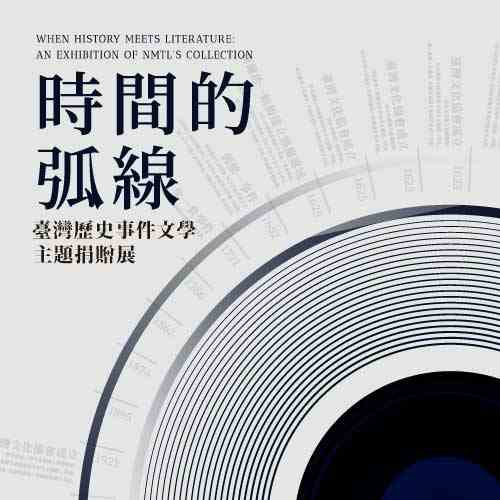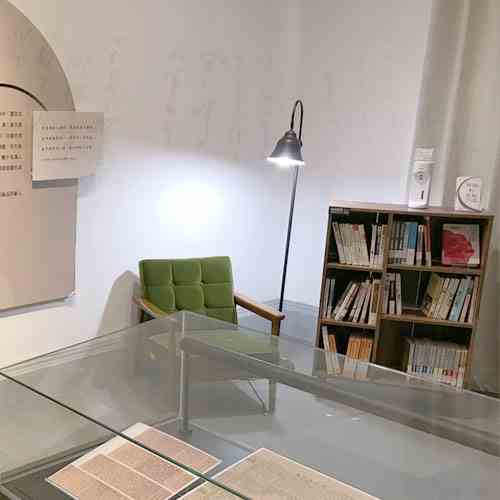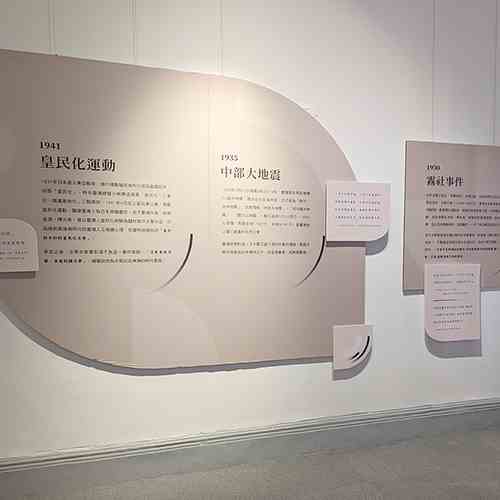Chu Yi-kuei Rebellion►Lin Shuang-wen Rebellion►Tai Chao-chun Incident►Mudan Incident
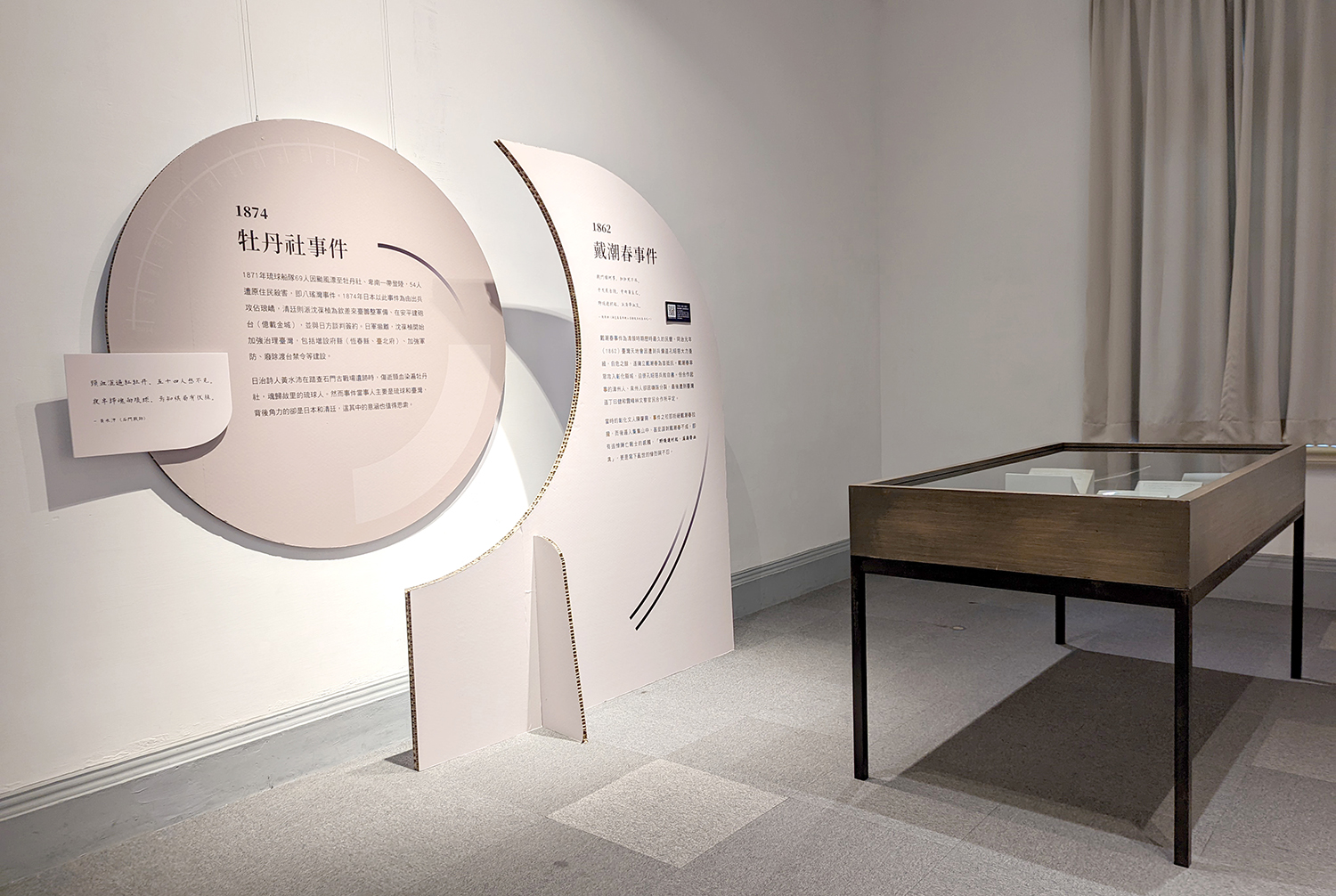
⭓ 1721, Chu Yi-kuei Rebellion
The largest-scale civil uprising by the Minnan and Hakka peoples since Taiwan was incorporated into the territory of the Qing dynasty. In Kangxi 60 (1721), the prefecture magistrate of Taiwan, Wang Chen, maltreated the civilians. Claiming that he was a descendant of the Ming emperors due to his surname Chu, Chu Yi-kuei, a duck raiser, took the lead to rally against the Qing dynasty rule, for the restoration of the Ming dynasty. A few days later, the Admiral of the Naval Division, Shih Shih-piao, and the Nan'ao Chief of the Army, Lan Ting-chen, led the troops into Taiwan to pacify the uprising. Chu further revolted in the Gangshan area and attacked Tainan City, which alerted the forces regarding the defensive capabilities of Tainan City, so that a fortress was built with wooden fences.
It has been rumored that Chu Yi-kuei's proposition about a "jaded belt" emerging from the sea was an auspicious sign for his uprising movement. How should this be considered? Chuang I-hua, a poet from the Japanese Colonial Era, mourned over the historical reality of Chu who garnered the name "Duck King."
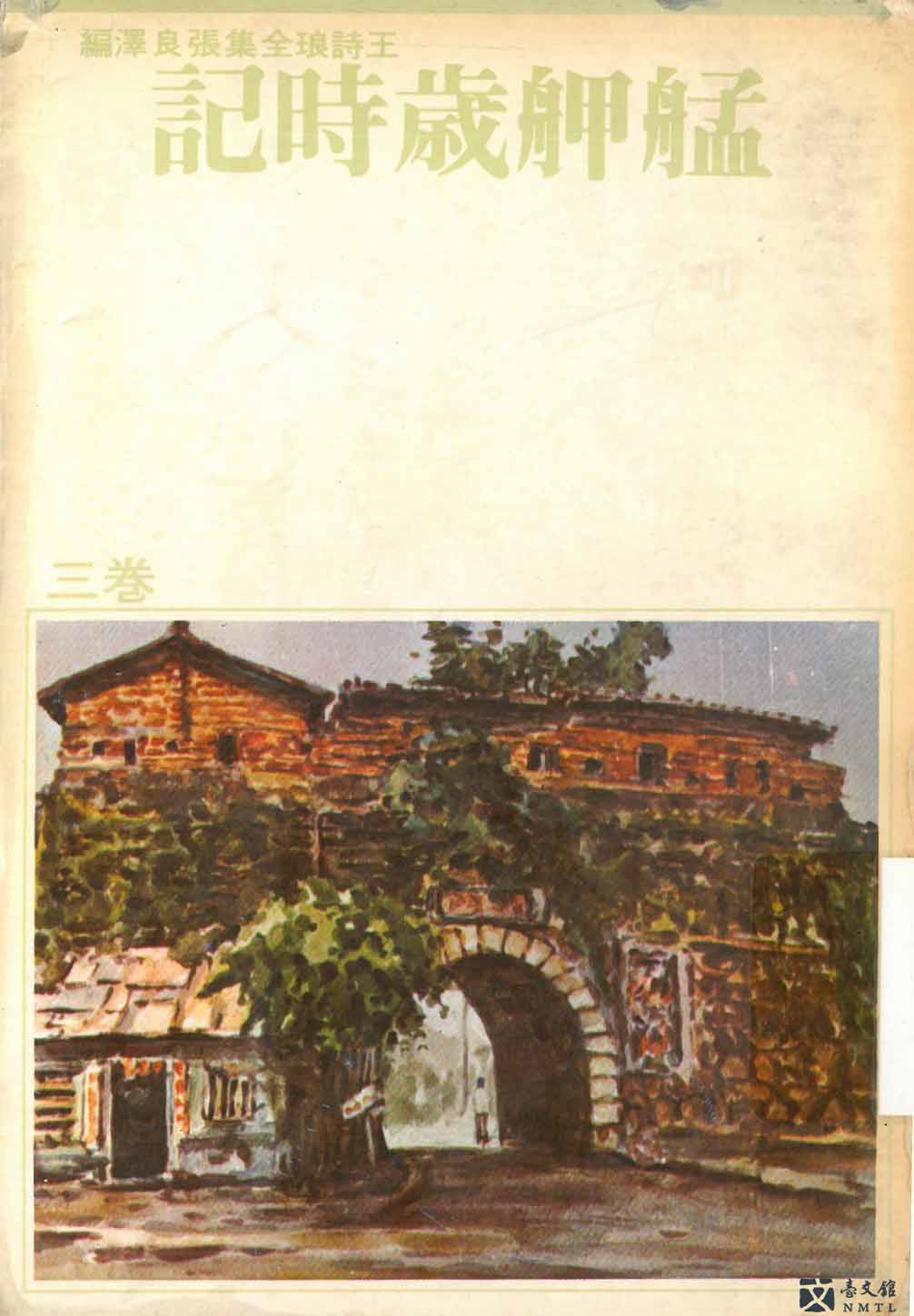
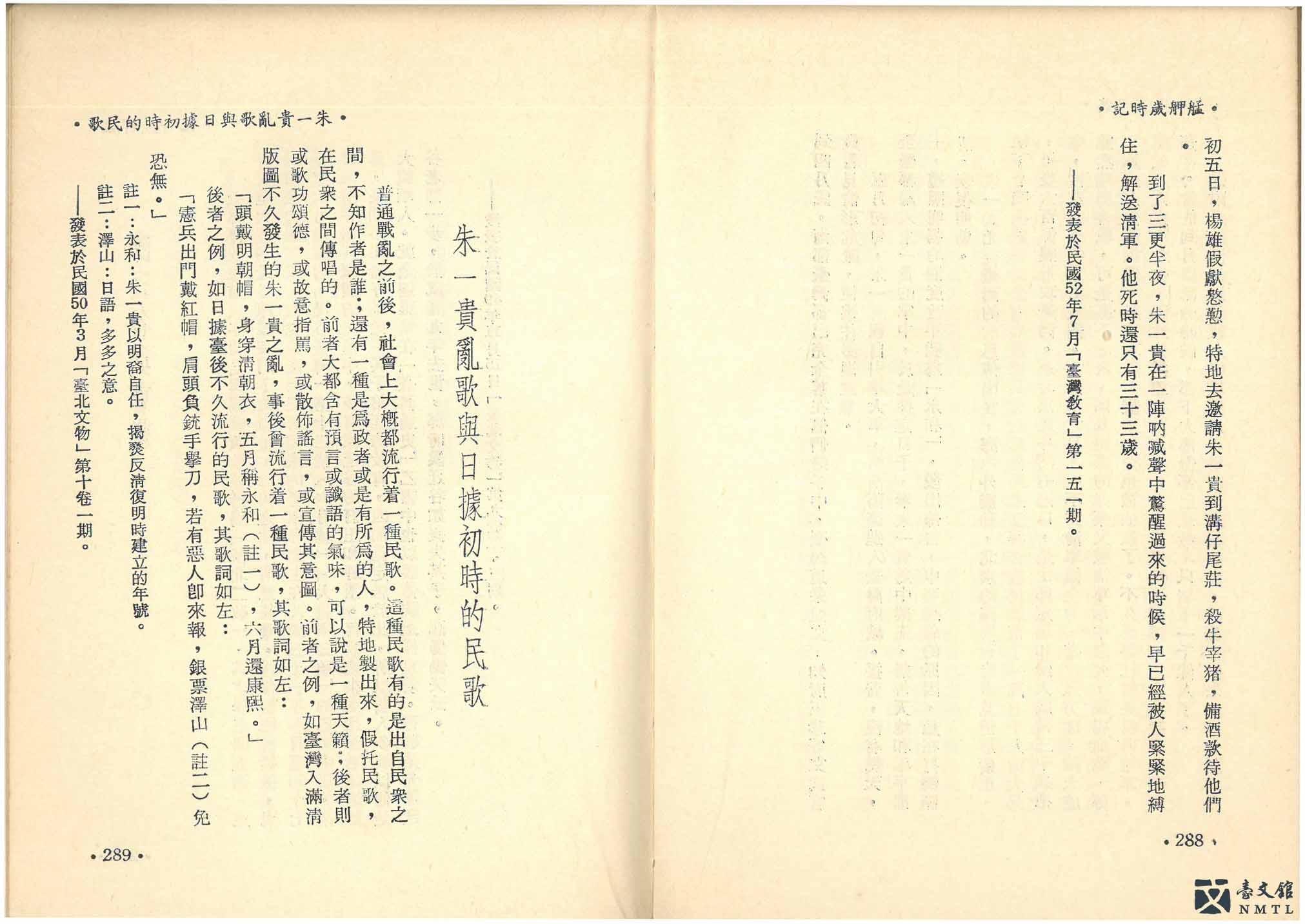
⌛Wang Shih-lang (1908-1984), "The Song of The Chu Yi-kuei Rebellion, and Folk Songs from The Early Japanese Occupation Period," THE CHRONICLE OF THE BANGKA ERA|Te Hsin Shih Publishing House, 1979. "The Song of The Chu Yi-kuei Rebellion, and Folk Songs from The Early Japanese Occupation Period" was published in Volume 10, Issue 1 of the TAIPEI CULTURAL RELICS in March 1961. It documented the folk song that circulated after the Chu Yi-kuei Rebellion, "Wearing a hat from the Ming dynasty, and clothing from the Qing dynasty; calling himself Emperor Yonghe in May, but Emperor Kangxi is back on the throne in June." There was also a popular folk song in the early days of Japanese Colonial Era, "The military police wear red caps and go out patrolling, guns on their backs and knives in their hands. Report to them if there is a villain, and there will be bounty offers. Do not worry, there will be more than sufficient bounty for you to take away." From such popular folk songs, one can see how the general people ridiculed Chu Yi-kuei's uprising.(Collection of the National Museum of Taiwan Literature)
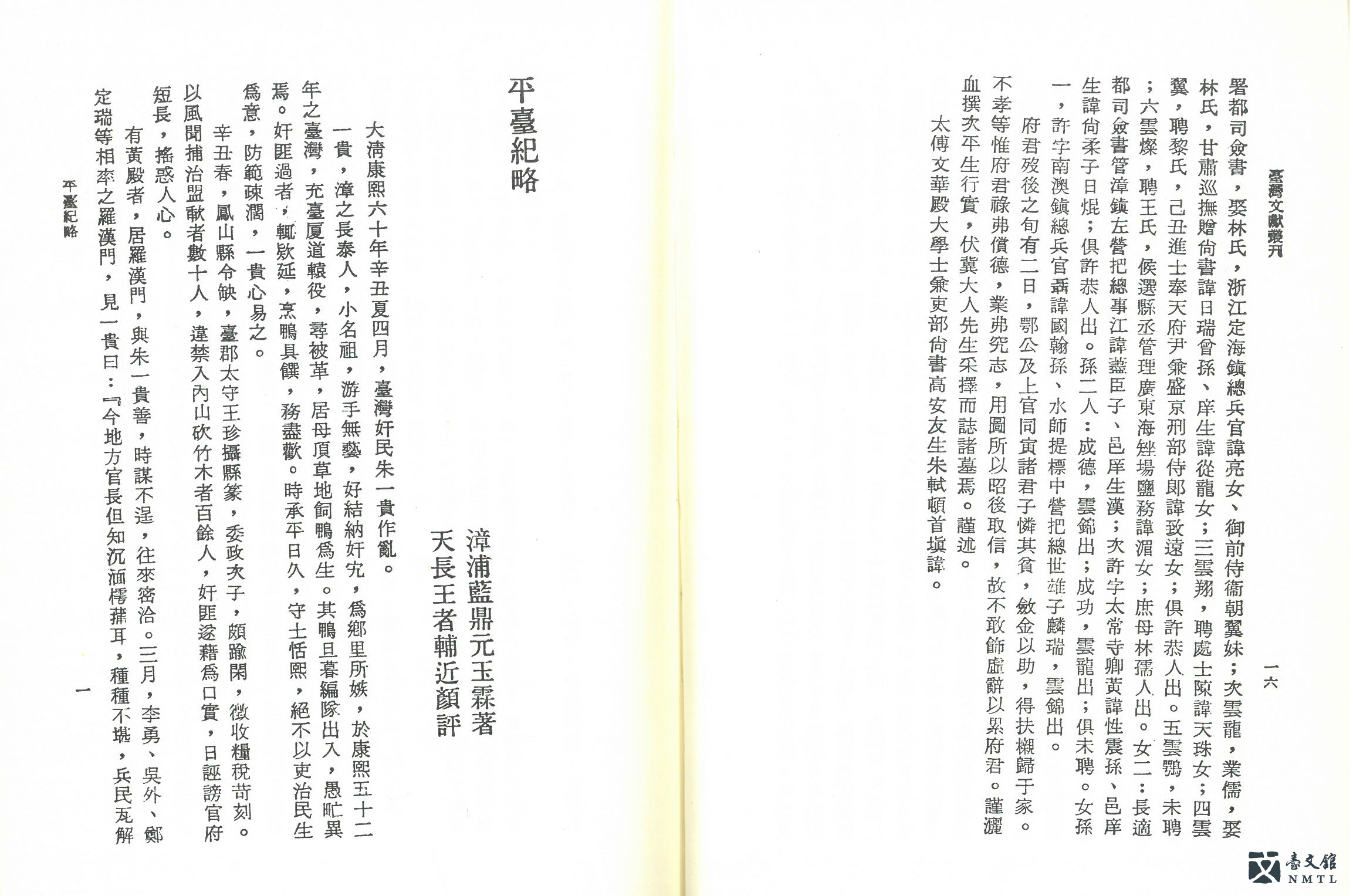
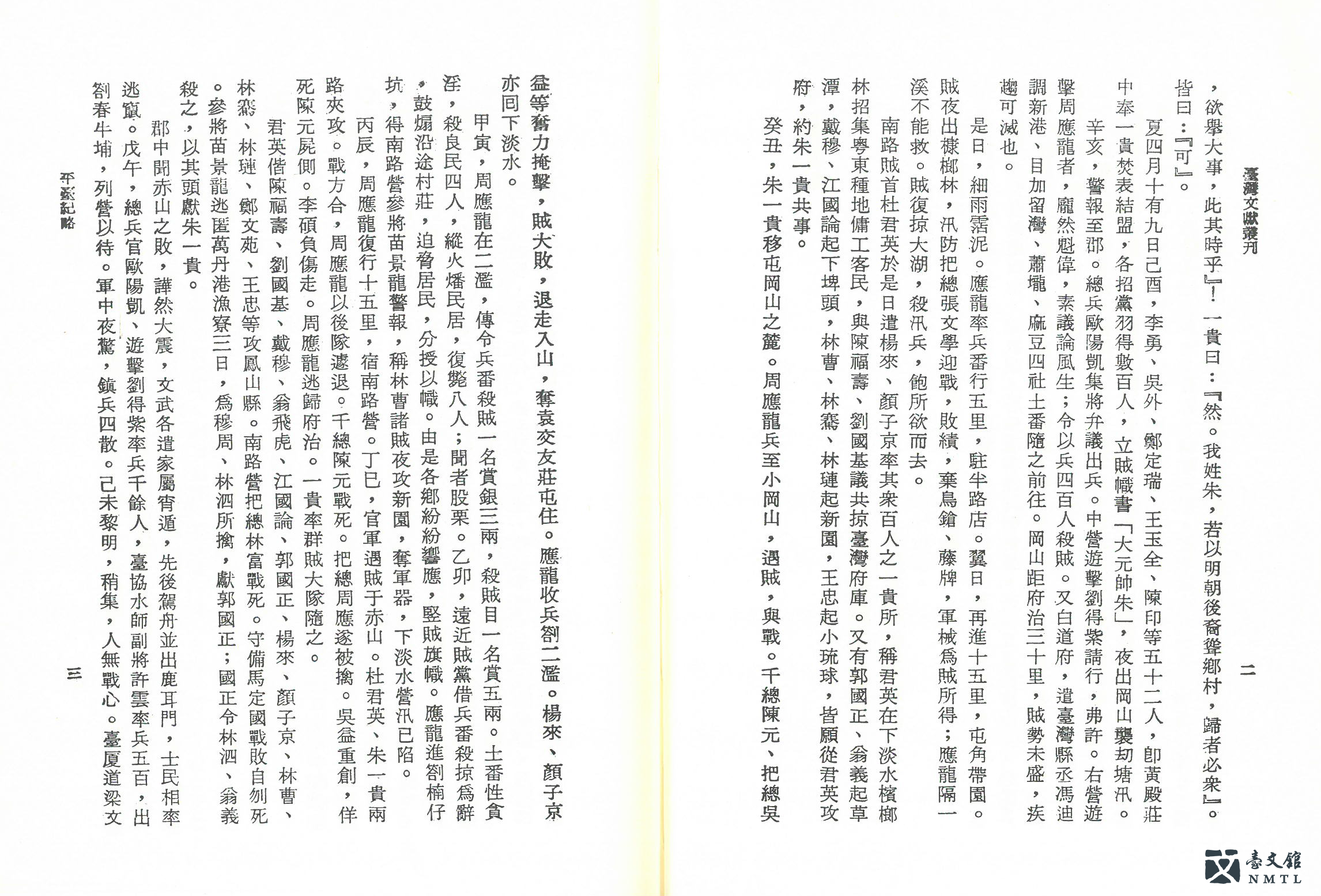
⌛Lan Ting-yuan (1680-1733), A BRIEF CHRONICLE ON THE PACIFICATION OF TAIWAN|Provincial Documents Committee of Taiwan, 1997. Lan Ting-yuan lost his father at the age of 10. In the late Kangxi years, Lan came to Taiwan with his cousin Lan Ting-chen, the military chief of Nan'ao, to suppress the Chu Yi-kuei Incident. A BRIEF CHRONICLE ON THE PACIFICATION OF TAIWAN is Lan Ting-yuan's account of the pacification of the Chu Yi-kuei Incident during the reign of Emperor Kangxi in the Qing dynasty.(Collection of the National Museum of Taiwan Literature)
◟◠◡◠◡◠◡◠◡◠◡◠◞
⭓ 1786, Lin Shuang-wen Rebellion
The Lin Shuang-wen Rebellion was the largest civil uprising during the Qing dynasty's rule of Taiwan. During the reign of Emperor Qianlong in 1787, the Tiandihui, a fraternal organization, was outlawed. The arrest of Lin Shuang-wen's uncles drove Lin to resist. Together with Zhuang Da-tian and others, Lin successively attacked cities such as Changhua, Fengshan, Tainan, and Zhuluo, killing Qing's Taiwan governor and others. In 1788 (Qianlong 53), Fuk'anggan was sent to suppress the rebellion. Lin Shuang-wen and others were arrested and sent in a prison cart to Beijing. Passing through Quanzhou on the way, people scrambled to get a glimpse of the "rebels" from Taiwan. This rebellion prompted Tainan City's defense to be escalated, and thereafter wooden fences and bamboo fences were converted into walled cities.
Chao Yi, a scholar from Jiangsu in the Qing dynasty, wrote a poem describing how the Qing authority sent troops numerous times across the sea at the beginning of the uprising, but failed to contain the rebellion and was even besieged in the city. With no more food supplies, the army and common people were in a desperate situation.
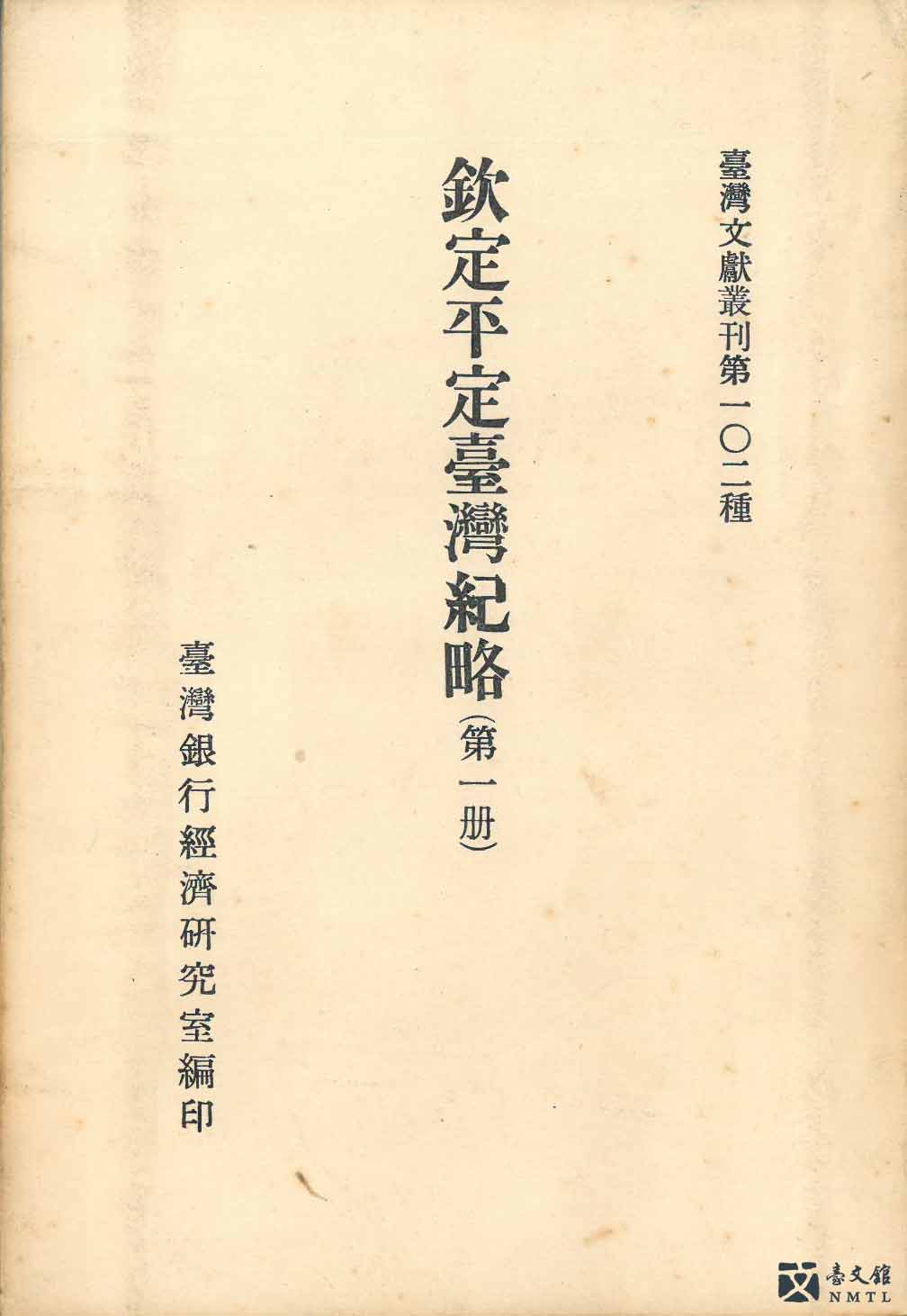
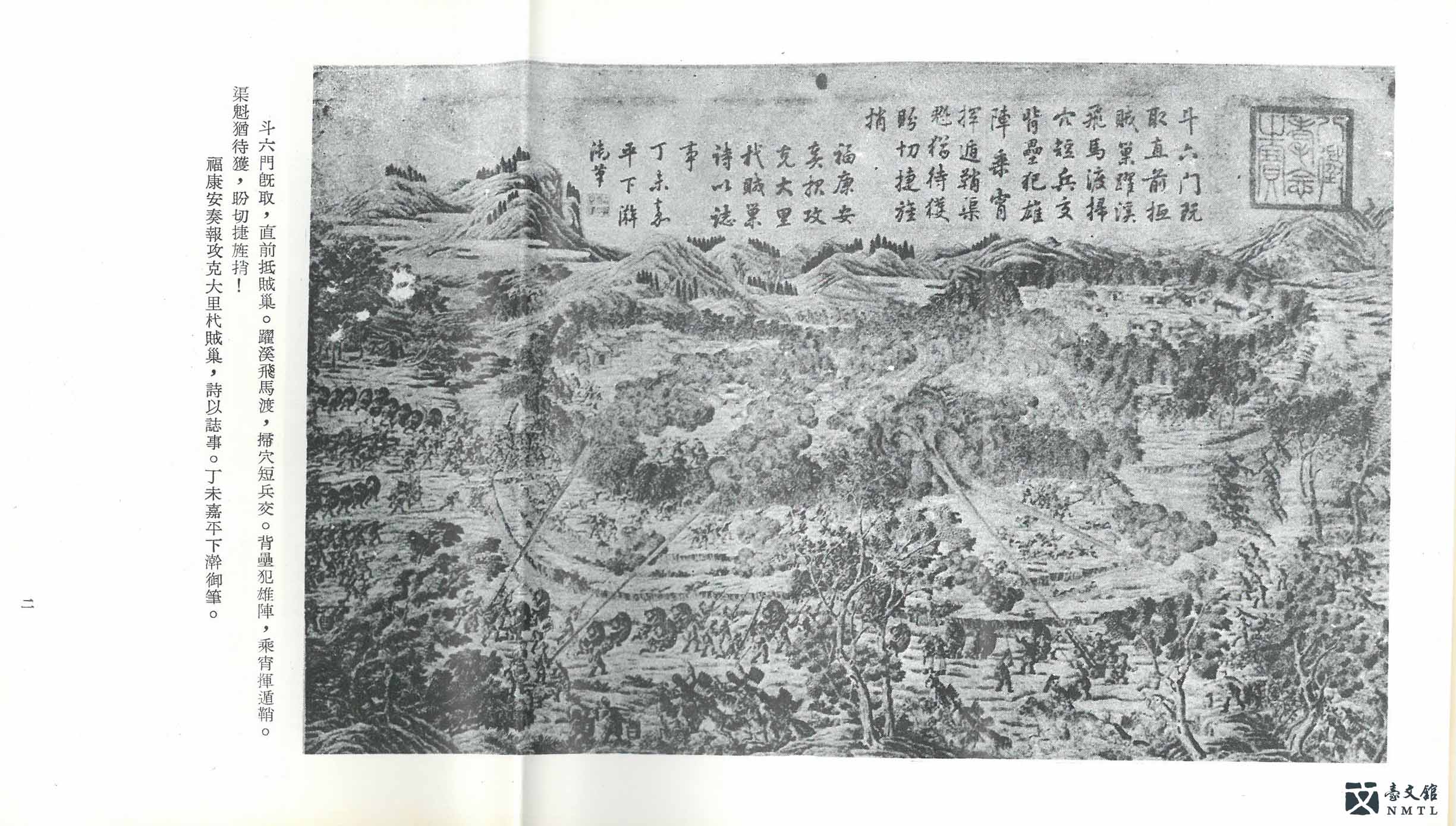
⌛Qing Gaozong (1711-1799, Qianlong), THE CHRONICLE OF THE IMPERIAL ORDER FOR THE PACIFICATION OF TAIWAN|Department of Economic Research, Bank of Taiwan, 1961. The detailed record for the pacification of the Lin Shuang-wen Rebellion by the imperial order of Emperor Qianlong of the Qing dynasty.(Collection of the National Museum of Taiwan Literature)
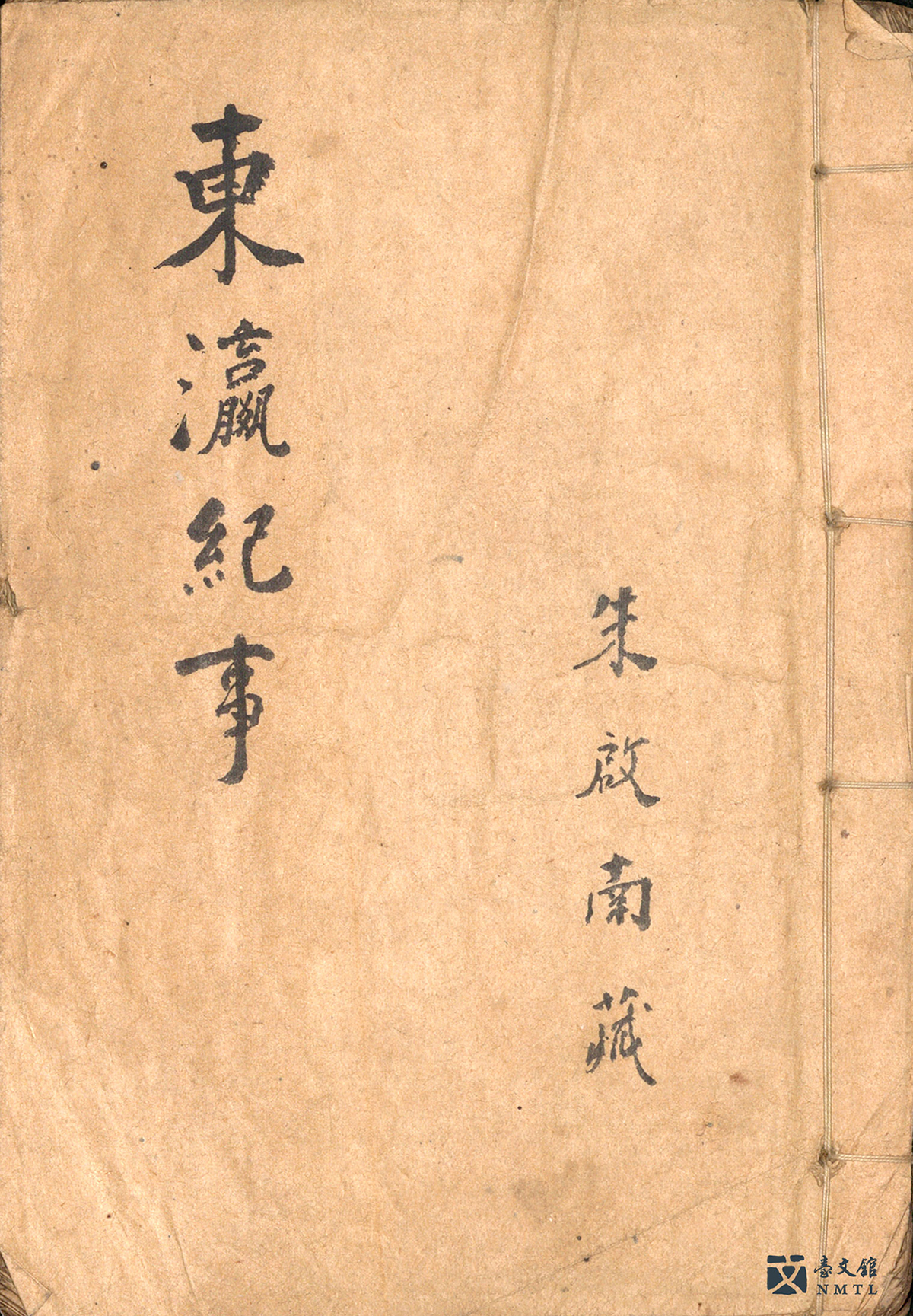
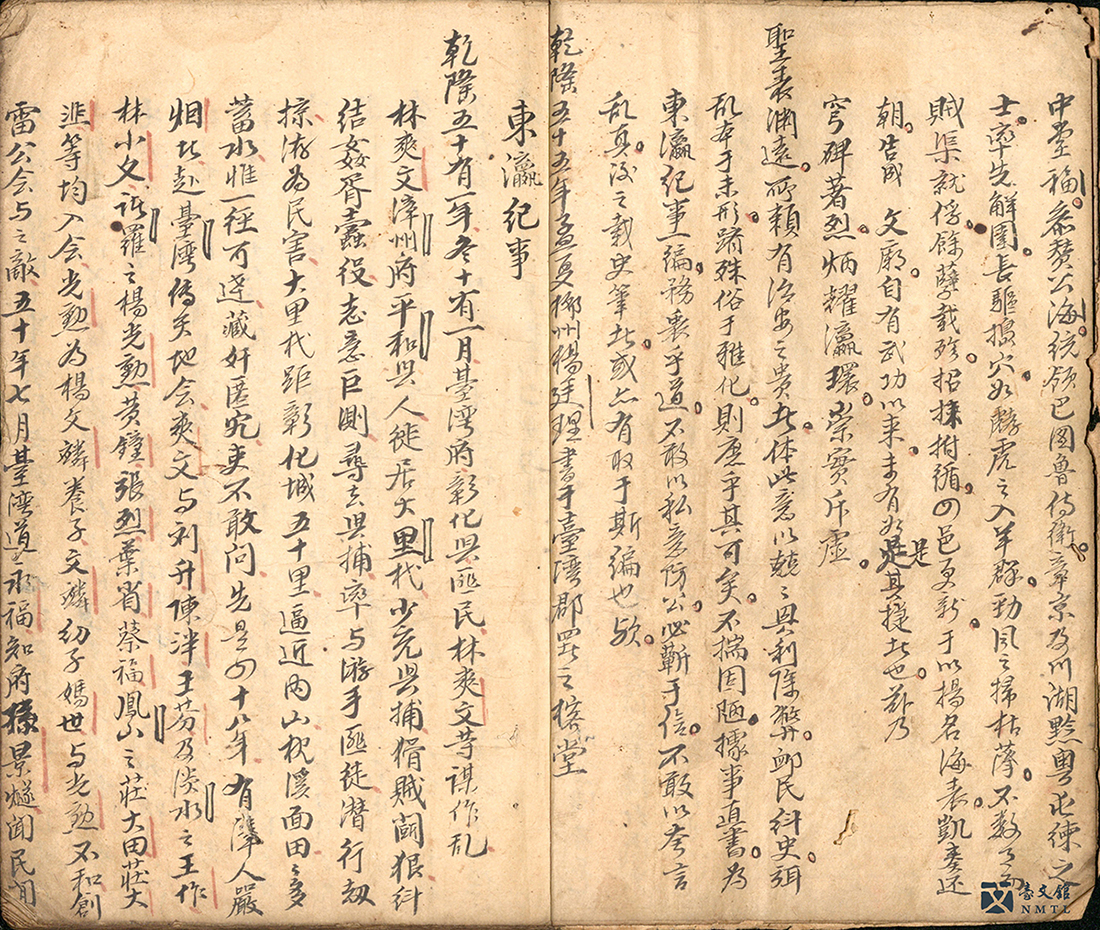
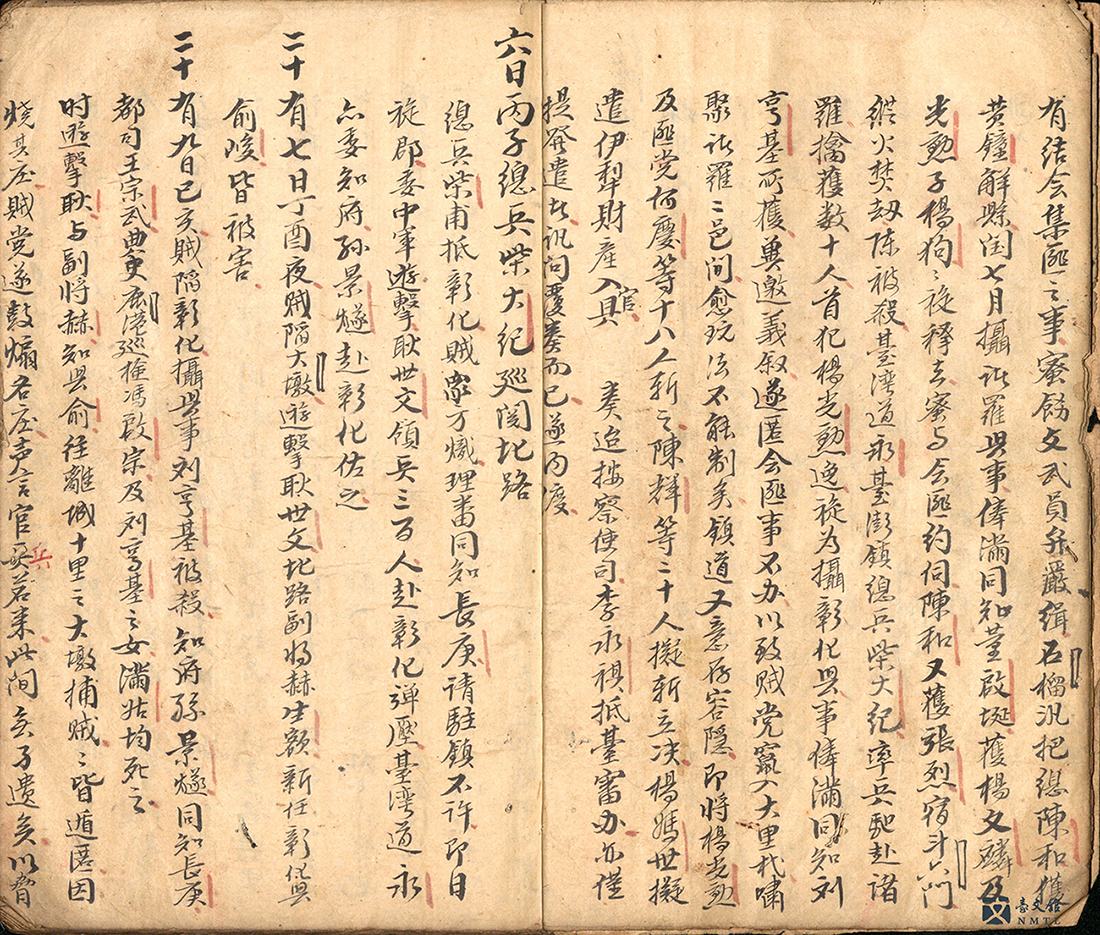
⌛Yang Ting-li (1747-1813), MANUSCRIPT OF THE JAPANESE CHRONICLE|The article depicts on the Lin Shuang-wen Incident.(Donated by the family of Chu Chi-nan)
◟◠◡◠◡◠◡◠◡◠◡◠◞
⭓ 1862, Tai Chao-chun Incident
The Tai Chao-chun Incident was the longest civil revolt during the Qing dynasty period. In 1862 (Tongzhi 1), the Taiwan Tiandihui was vigorously investigated by Military Director Kung Chao-tsu. Tai Chao-chun became the leader of the resistance, and led his troops into Changhua County, forcing Kung Chao-tsu to commit suicide. However, the people from Zhangzhou and Quanzhou who cooperated in the rebellion fell apart later and were finally pacified through the combined efforts of government officials and civilians, namely Taiwan Intendant Ting Yueh-chien and Lin Wen-cha from Wufeng.
Chen Chao-Hsing, a literary figure in Changhua at that time, rejected Tai Chao-chun's cajoling at the beginning of the incident. He escaped into Jiji Mountain; later, having failed at the assassination plot of Tai Chao-chun, he wrote, "A wildfire burns one village after another, and blood flows into the river streams" to express his desolation. His works speak of a tragic, unbearable, and troubled times.
✢ ✢ ✢
🔊Ting Hsiu-chin, "The Poetic Song of 1861," Folk Literature, THE ISLAND NARRATIVE: TAIWAN NIAN-GE (1)|2014. This song is also known as the "Red Flag Rebellion". It is a narrative about the Tai Chao-chun Incident which has been circulated around Changhua. The museum invited nian-ge artists to record the song in an effort to bring back the beauty of folklore in the interpretation of history. *"Nian-ge" is a song with a mix of singing and chanting.(Published by the National Museum of Taiwan Literature)
✢ ✢ ✢
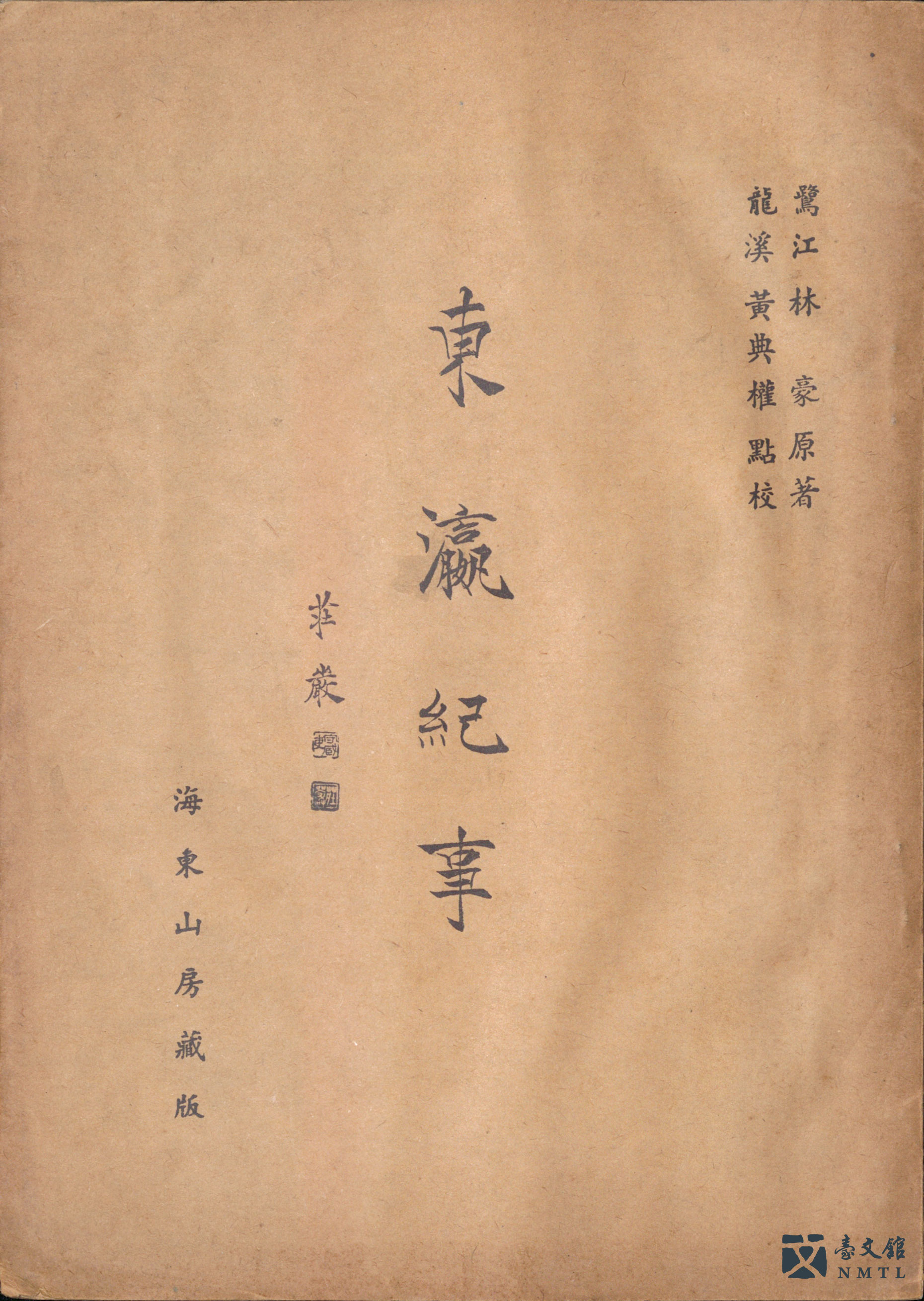
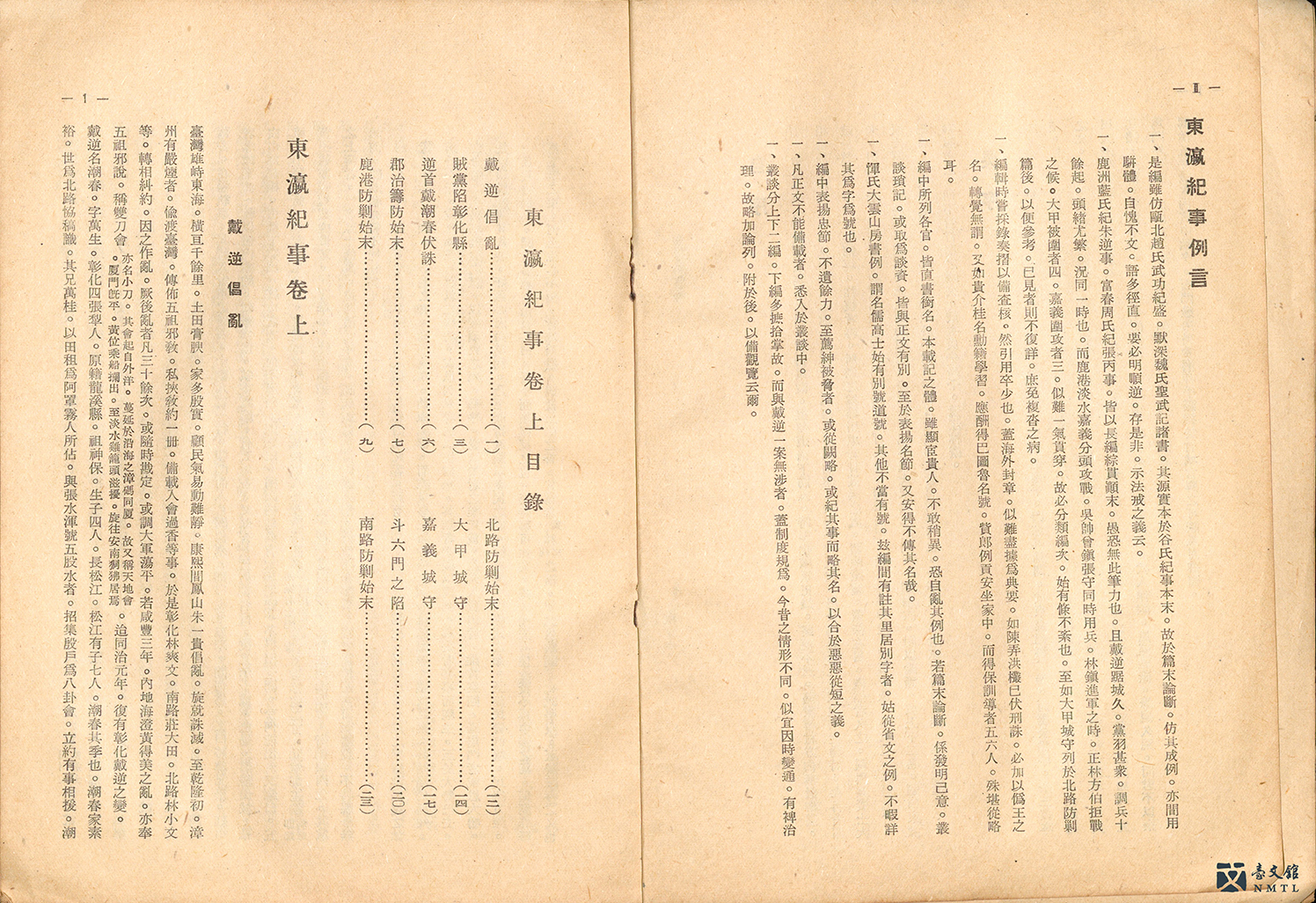
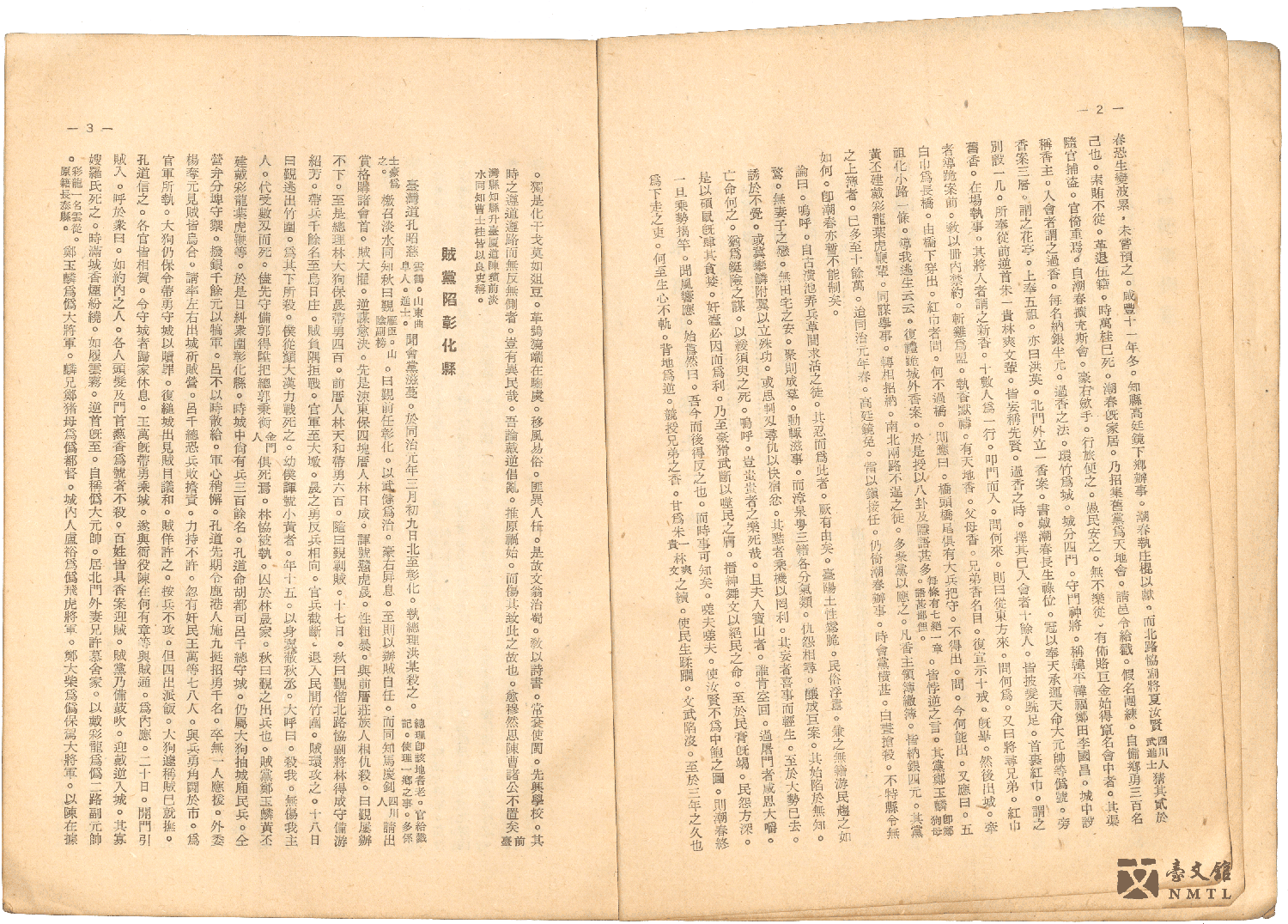
⌛Lin Hao (1831-1918), THE CHRONICLE OF JAPAN|Haidong Shanfang Collection. The article was published in Volume 5, Issue 2 of the TAINAN CULTURE in July 1956. It mainly describes the Tai Chao-chun Rebellion from the beginning to the end.(Donated by Hsu Ping-ting)
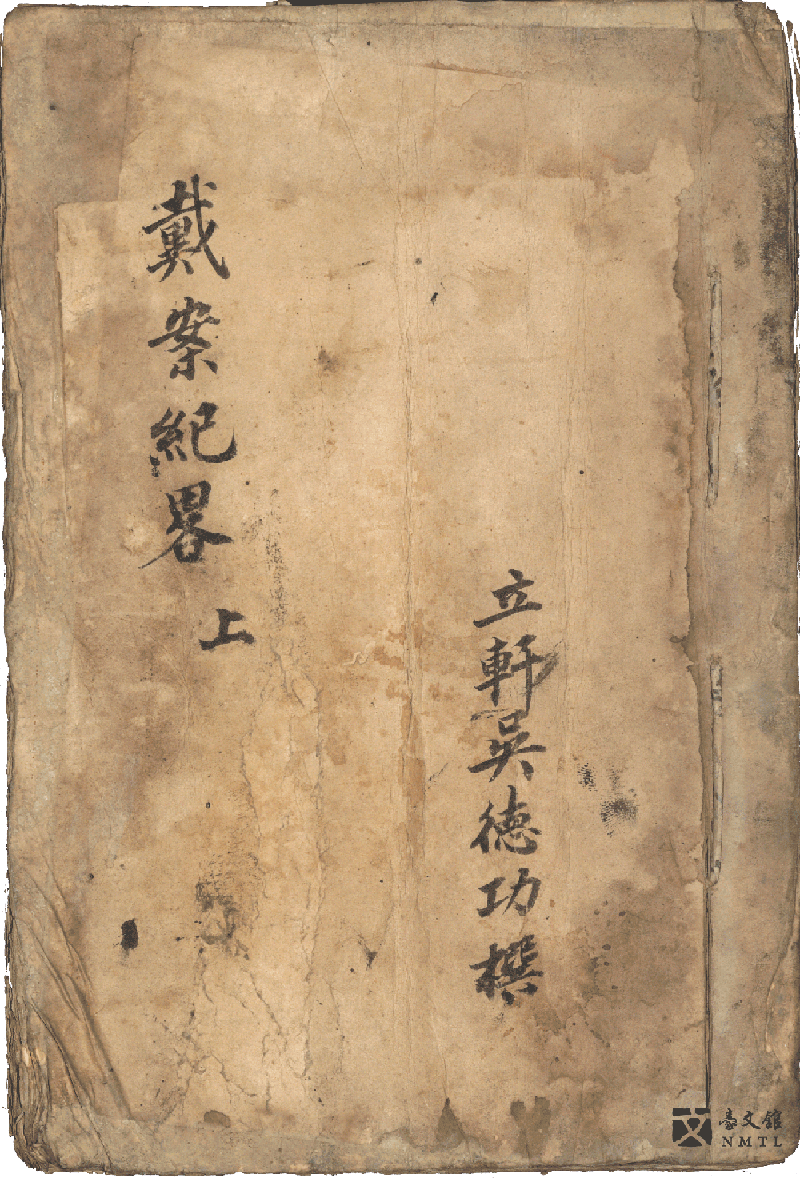
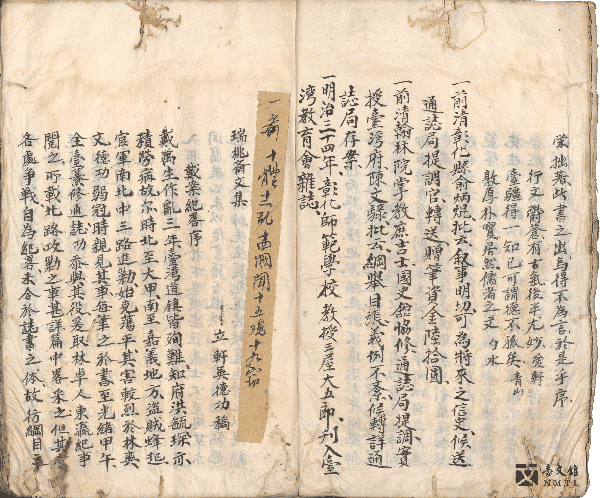
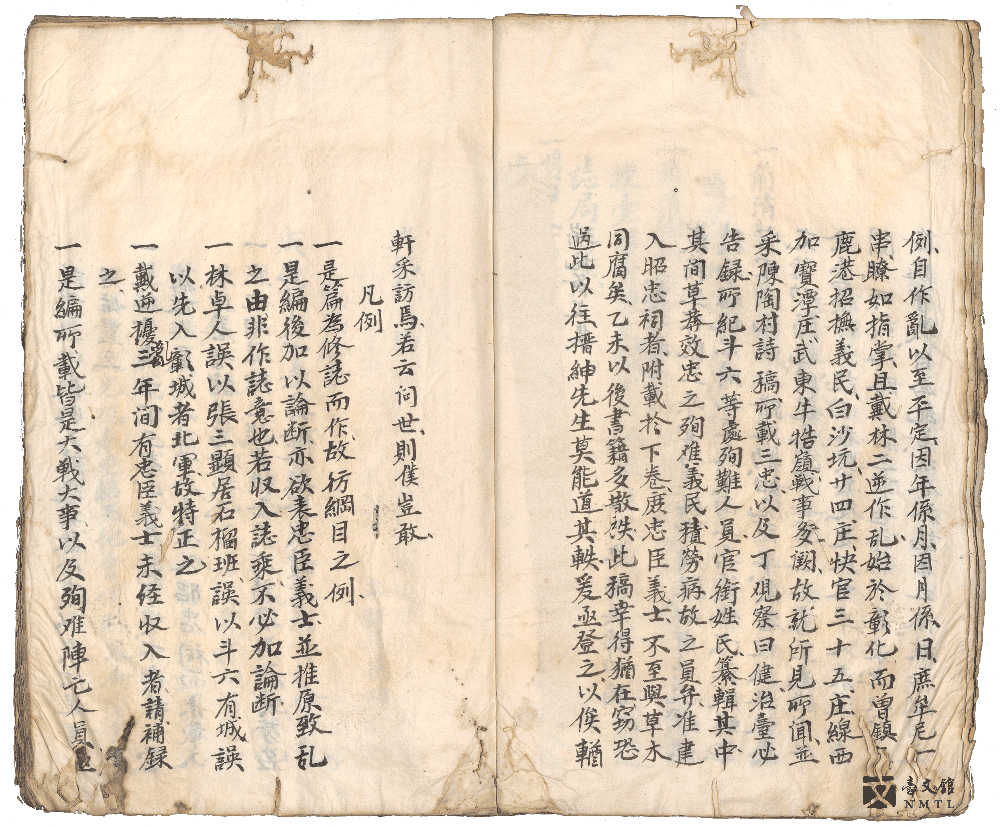
⌛Wu Te-kung (1850-1924), THE CASE OF TAI IN BRIEF|The article is an account of the Tai Chao-chun Incident.(Donated by the Green Taiwan Cultural and Educational Foundation)
◟◠◡◠◡◠◡◠◡◠◡◠◞
⭓ 1874, Mudan Incident
In 1871, a Ryukyuan vessel with 69 people drifted towards Taiwan due to a typhoon and landed in the Mudanshe and Beinan area; 54 sailors of the fleet had been killed by the indigenous people, which was later considered the Mudan Incident. On the grounds of this incident, the Japanese dispatched troops in 1874 to attack and capture Liangkiau. The Qing imperial court sent Shen Bao-zhen as an imperial envoy to Taiwan to organize armaments, build a fort in Anping (the Eternal Golden Castle), and negotiate a settlement with the Japanese. After the Japanese army's retreat, Shen began to strengthen the governance of Taiwan, including the establishment of prefectures (Hengchun County, Taipei Prefecture), solidified the military defense, and abolished the ban on crossing the Taiwan Strait.
Huang Shui-pei, a poet during the Japanese Colonial Era, visited the ruins of the ancient battlefield in Shimen; he grieved over the bloodshed that had happened in Mudanshe, and the spirits of the dead who returned to the island of Ryukyu. While the parties involved in the incident were mainly Ryukyuans and Taiwanese, the Japanese and the Qing imperial court were the powers fighting behind the scenes. The implication of this incident is worthy of contemplation.

